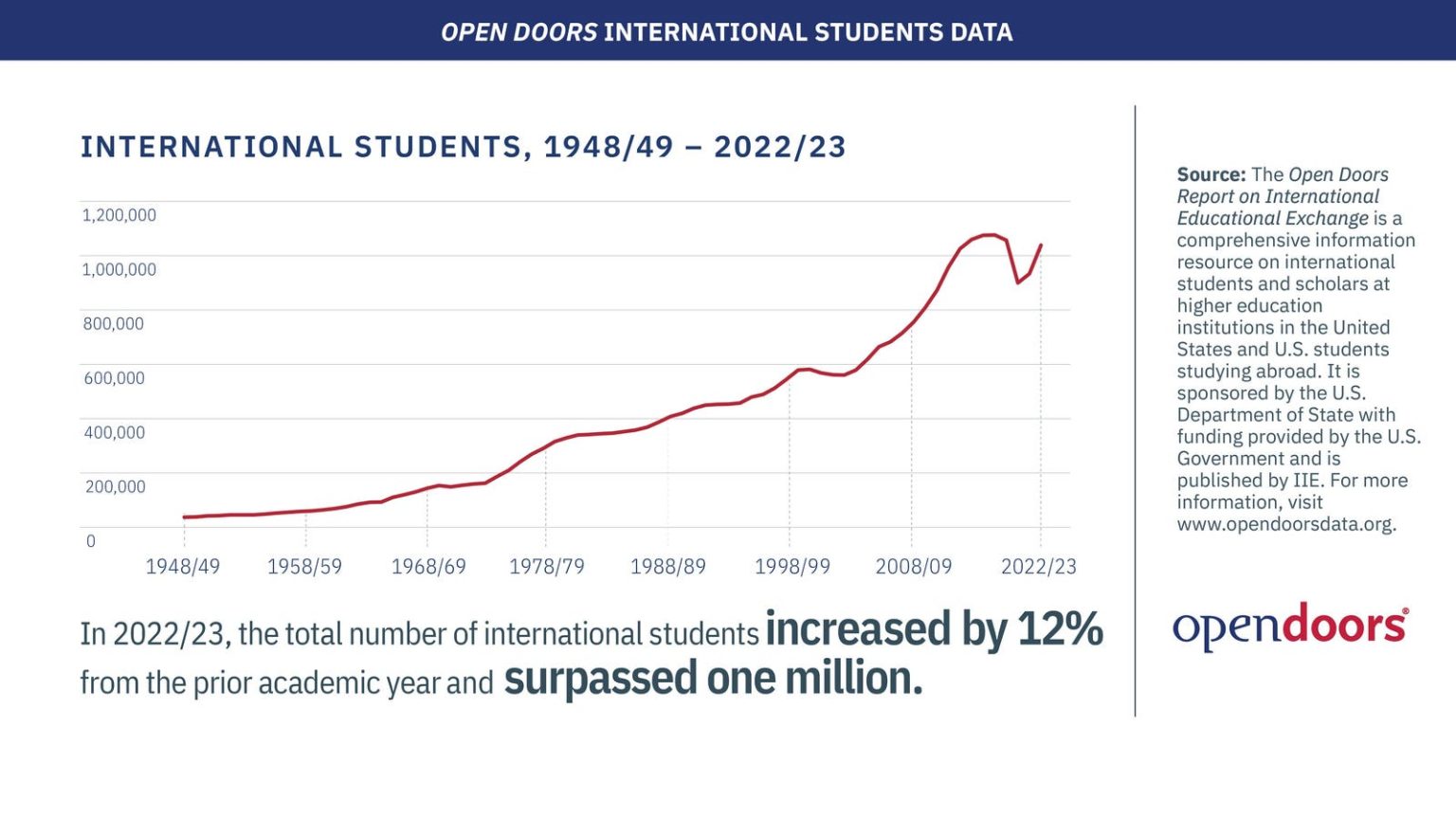Over one million international students contributed $40.1 billion to the U.S. economy in the 2022-2023 academic year, marking a significant 19 percent increase compared to the previous academic year, according to data from NAFSA: Association for International Educators in Washington, DC.
Even though the economic benefit remains below the peak of nearly $40.5 billion set in the 2018-2019 academic year, this is the second consecutive year of recorded growth following the negative effect of the pandemic that began in March 2020. The number of international students studying at U.S. colleges and universities rebounded from lows hit during the pandemic, rising 12 percent to 1,057,188 in 2022-2023, an increase of more than 100,000 students according to the Open Doors report by the Institute of International Education (IIE).
“International education doesn’t just benefit individuals. It’s also vital to American diplomacy, to our economic competitiveness, even to our national security,” said Secretary of State Antony Blinken in a recorded statement released during a live stream presentation of the Open Doors data.
International students make contributions not only through the tuition they pay to U.S. higher education institutions but also through their spending on accommodations, transportation, food, and consumer goods while they are living in the U.S.
“Their contributions to the U.S. economy are significant, and it is encouraging to see an annual increase for the second year in a row,” said Fanta Aw, NAFSA’s executive director and CEO, in a statement.
The economic activity of international students also supported 368,333 jobs, a 9.8 percent rise compared to the year before. NAFSA estimates that three international students contribute to the creation or support of one US job. California, New York and Texas hosted the most international students and nine states surpassed the $1 billion mark in terms of economic contributions made by these students.
The impact of international students, however, goes beyond what this population spends during their years earning a U.S. university or college degree. They bring a diversity of experiences to campuses, provide international perspectives in classrooms and become part of global alumni networks for domestic students, according to international education experts.
“Those of us in the profession of supporting international students will be quick to emphasize that their contributions go far beyond economic impact,” said Eddie West, Assistant Dean, International Strategy and Programs at SDSU Global Campus at San Diego State University.
West added that, even when quantifying the economic impact of international students, the benefits aren’t being comprehensively assessed.
“It’s important to acknowledge just what a boon to national and local economies their spending can be,” West said. “The NAFSA data doesn’t yet incorporate the economic impact of international students who remain in the U.S. after graduation, whether on H-1B visas, by starting companies, or after becoming permanent residents.”
According to the Open Doors data, the number of Indian students studying in the U.S. in 2022-2023 increased 35 percent to 268,923. While there were still more Chinese students – 289,526 – enrolled at U.S. colleges and universities, growth in those student numbers was essentially flat (-0.2%).
Read the full article here





